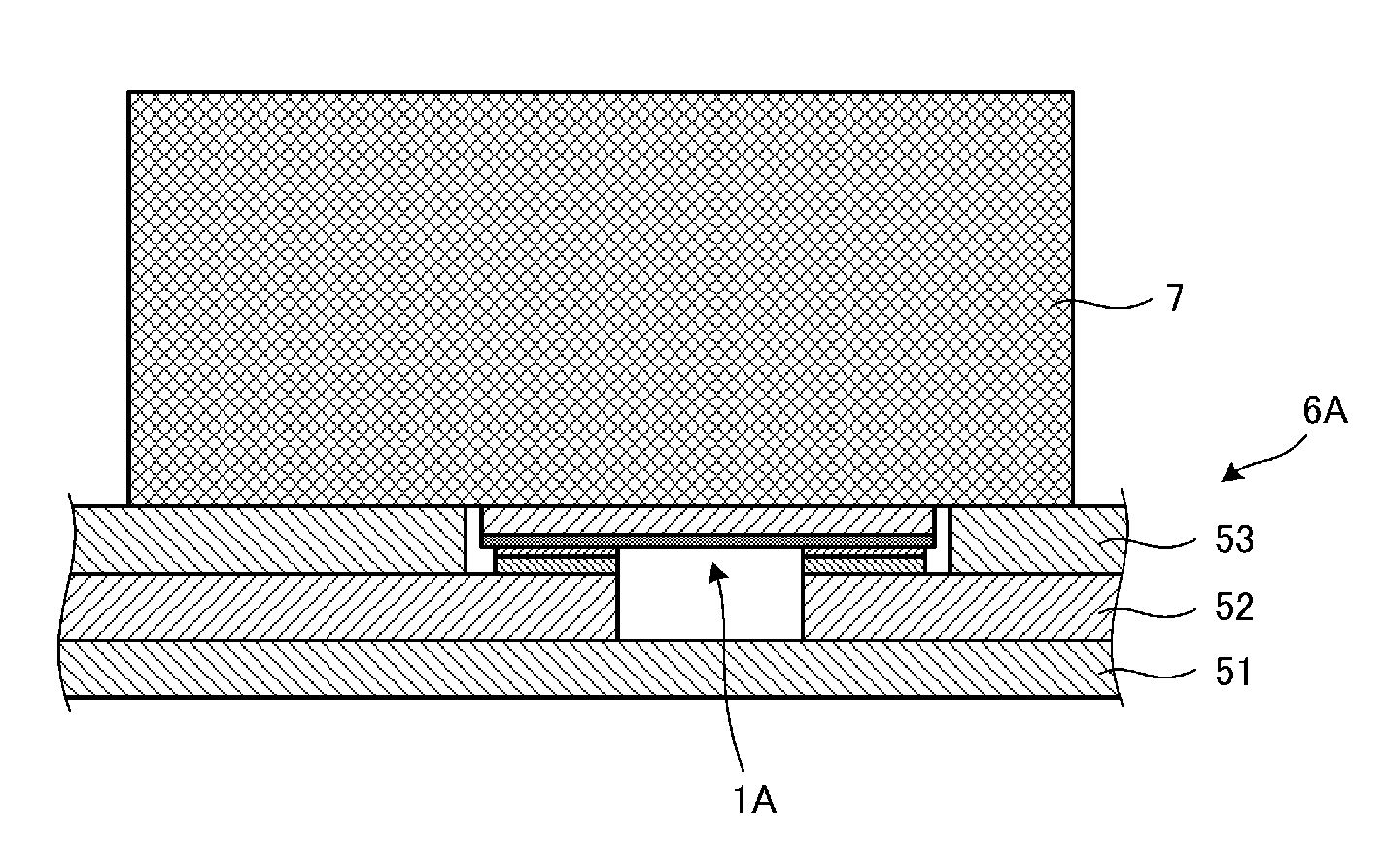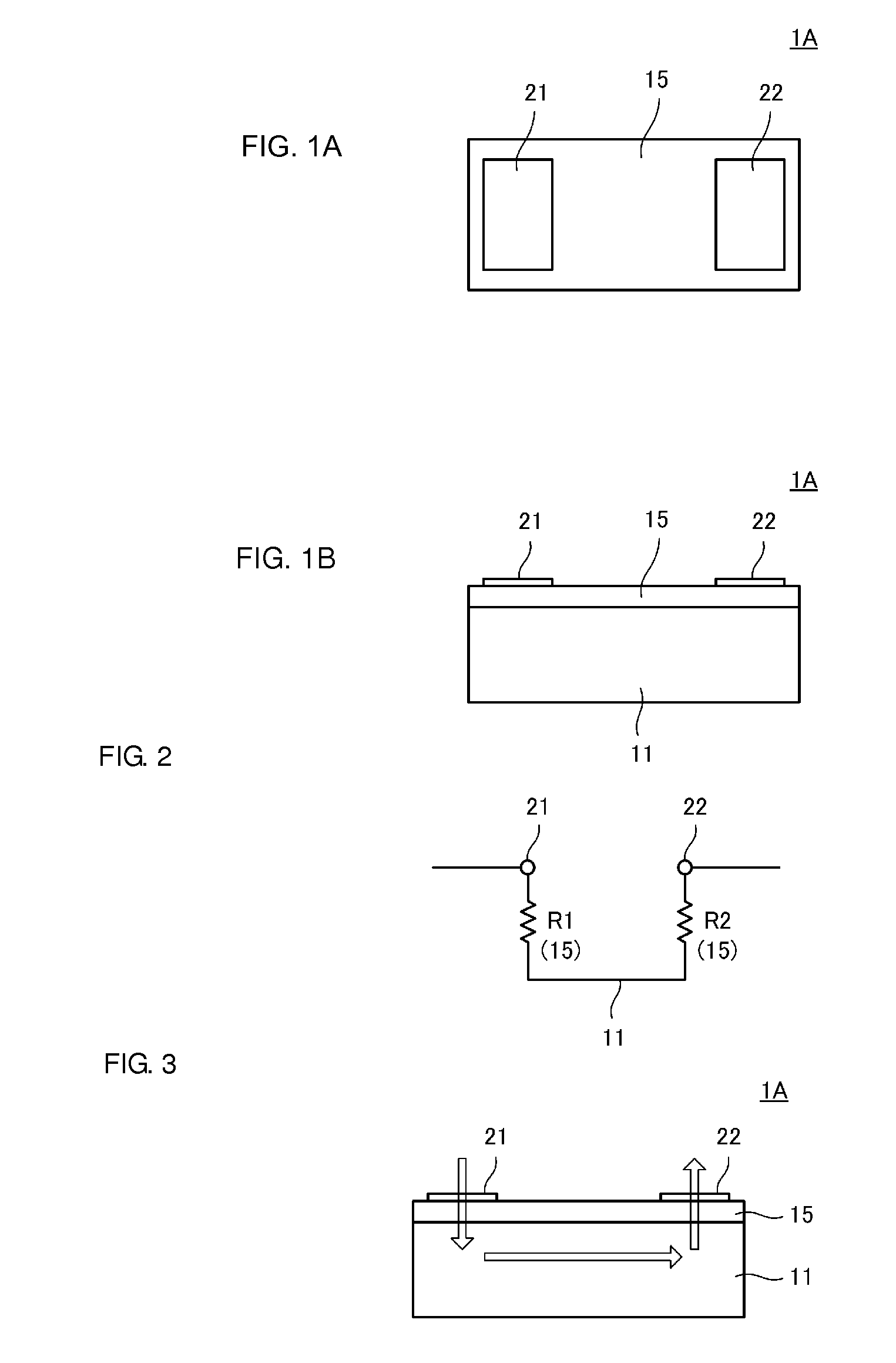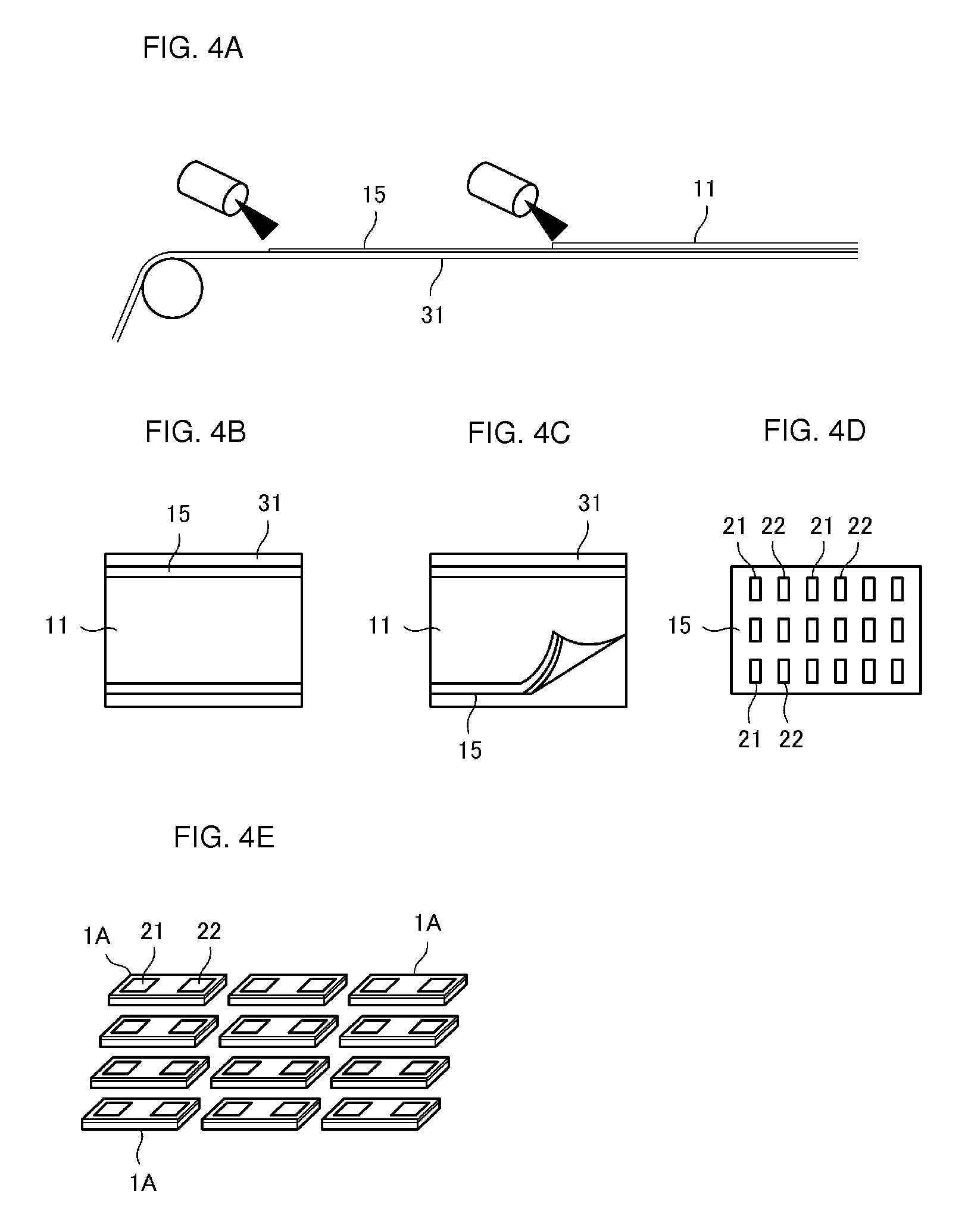Temperature sensor and temperature sensor attaching structure
a technology of temperature sensor and attached structure, which is applied in the direction of instruments, cell components, heat measurement, etc., can solve the problems of poor heat conduction, cracks in and the temperature information detecting element itself has no flexibility, so as to achieve the effect of compromising the flexibility of the flexible board
- Summary
- Abstract
- Description
- Claims
- Application Information
AI Technical Summary
Benefits of technology
Problems solved by technology
Method used
Image
Examples
first preferred embodiment
[0044]The configuration of a flexible thermistor provided to a temperature sensor according to a first preferred embodiment of the present invention will be described first.
[0045]FIG. 1A is a plan view of a flexible thermistor, and FIG. 1B is a front view of the flexible thermistor. A flexible thermistor 1A includes a metal base 11, a thermistor layer 15 that is located on the metal base 11, and a pair of split electrodes 21 and 22 that are located on the thermistor layer 15. The metal base 11 is obtained preferably by firing a metal powder paste made into a sheet-shaped form. The thermistor layer 15 is obtained by preferably firing a ceramic slurry made into a sheet-shaped form. The split electrodes 21 and 22 are obtained preferably by firing an electrode material paste. The metal powder paste in a sheet-shaped form, the ceramic slurry in a sheet-shaped form, and the electrode paste are fired integrally with one another. It suffices that at least the metal base 11 and the thermisto...
second preferred embodiment
[0063]FIG. 6 is a cross-sectional view of a temperature sensor 6B according to a second preferred embodiment of the present invention. The temperature sensor 6B has a structure in which the flexible thermistor 1A is mounted on a flexible board 5B. The flexible board 5B includes the base layer 51, the wiring conductor layer 52 that is located on the base layer 51, and the cover layer 53 that is stacked over the base layer 51 and covers the wiring conductor layer 52.
[0064]In the example illustrated in FIG. 6, unlike the flexible board 5A illustrated in FIG. 5A with reference to the first preferred embodiment, the mounting surface of the flexible thermistor 1A is flat. That is, the thickness of the base layer 51 is made larger for the area where the wiring conductor layer 52 is not located. At the position of the cross section illustrated in FIG. 6, the surface of the base layer 51 on which the flexible thermistor 1A is mounted includes a projection 51P. The projection 51P preferably h...
third preferred embodiment
[0066]FIG. 7 is a cross-sectional view illustrating a temperature sensor attaching structure according to a third preferred embodiment of the present invention. In FIG. 7, the temperature sensor 6A preferably has the same structure as that described above with reference to the first preferred embodiment. The temperature detection object 7 is, for example, a heat generating element. The temperature sensor 6A is affixed to the temperature detection object 7. The flexible thermistor 1A comes into contact with or close proximity to the temperature detection object 7 in this state. That is, of surfaces of the temperature sensor 6A, the surface through which the flexible thermistor 1A is exposed is affixed to the temperature detection object 7.
[0067]As illustrated in FIG. 5, the height of the flexible thermistor 1A substantially coincides with the height of the surface of the cover layer 53, and moreover, the flexible thermistor 1A itself has flexibility. Therefore, the stress load applie...
PUM
| Property | Measurement | Unit |
|---|---|---|
| thickness | aaaaa | aaaaa |
| thickness | aaaaa | aaaaa |
| thickness | aaaaa | aaaaa |
Abstract
Description
Claims
Application Information
 Login to View More
Login to View More - R&D
- Intellectual Property
- Life Sciences
- Materials
- Tech Scout
- Unparalleled Data Quality
- Higher Quality Content
- 60% Fewer Hallucinations
Browse by: Latest US Patents, China's latest patents, Technical Efficacy Thesaurus, Application Domain, Technology Topic, Popular Technical Reports.
© 2025 PatSnap. All rights reserved.Legal|Privacy policy|Modern Slavery Act Transparency Statement|Sitemap|About US| Contact US: help@patsnap.com



